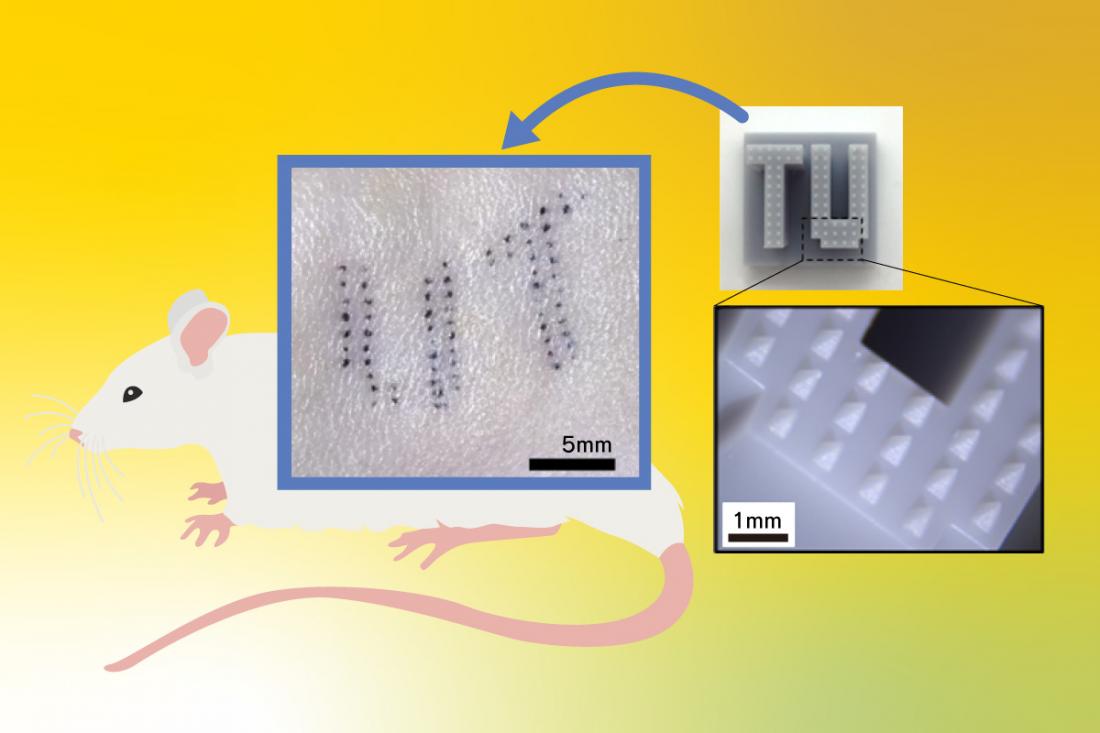Tokyo, Japan – If you’ve ever taken a car trip through a rural area, you might already know that livestock, including cows and sheep, can be individually tracked using decidedly old-fashioned methods, such as ear tags or even branding marks. By contrast, many tech-savvy pet owners have opted to have their dog or cat “chipped” by having a radio frequency identification (RFID) permanently implanted under the skin. However, all these identification solutions leave something to be desired, as ear tags can become damaged or lost, while RFID chips require an invasive procedure to insert and specialized equipment to read.
In a study recently published in Scientific Reports, researchers from the Institute of Industrial Science, The University of Tokyo demonstrated an alternative “bio-tagging” method, in which a unique array of microneedles – with alphanumeric characters visible to the unaided eye - is directly inserted into the skin for permanent identification of animals. This approach relies on a patch of dissolvable microneedle arrays to deliver the dye molecules. “We feel that our method is a simpler, safer, and more humane way to label animals, and is versatile enough to be applied both in pets and industrial situations,” lead author of the study, Jongho Park says.
The researchers used microneedle array patches (MAPs), in which microneedle arrays, less than 1 mm long, are created in the form of a matrix from customized polydimethylsiloxane molds. By altering the molds, desired symbols can be tattooed into the animal, like the output of dot-matrix printers. The negative molds themselves can be made easily from positive 3D-printed resin plugs. “Our MAPs approach allows for a very large number of unique identifiers, and does not require much specialized training to apply,” says senior author, Beomjoon Kim.
Testing showed that the biotags remained clearly legible in the skin over a month after being stamped. This technique can be a useful tool for animal research and management, as well as potentially being extended biomedical applications and other areas such as flexible electronics integration.
###
The article, “Biotagging method for animal identification using dissolvable microneedle arrays prepared by customisable moulds,” was published in Scientific Reports at DOI: 10.1038/s41598-023-50343-6.
About Institute of Industrial Sciene, The University of Tokyo
The Institute of Industrial Science, The University of Tokyo (UTokyo-IIS) is one of the largest university-attached research institutes in Japan. UTokyo-IIS is comprised of over 120 research laboratories—each headed by a faculty member—and has over 1,200 members (approximately 400 staff and 800 students) actively engaged in education and research. Its activities cover almost all areas of engineering. Since its foundation in 1949, UTokyo-IIS has worked to bridge the huge gaps that exist between academic disciplines and real-world applications.



